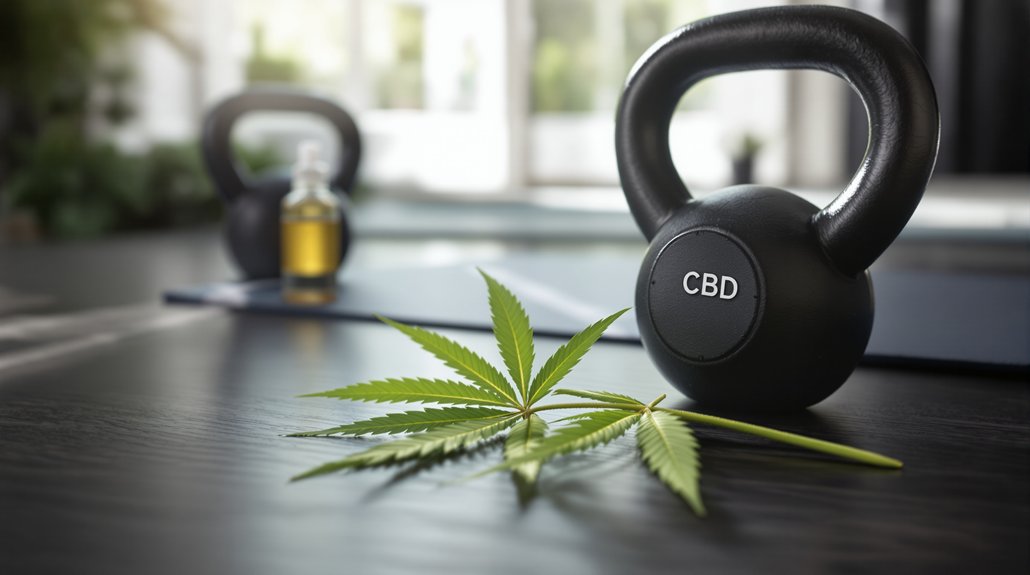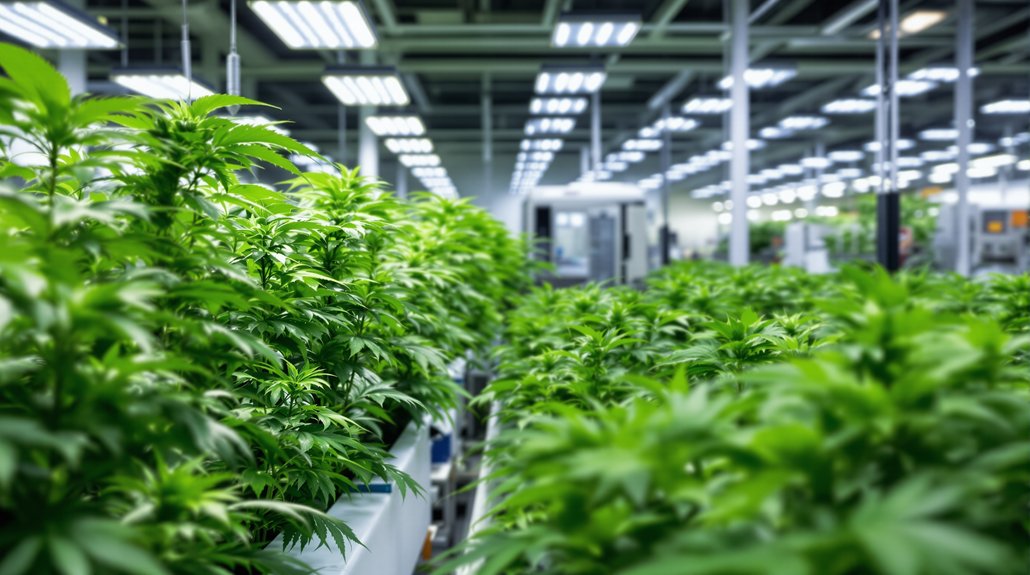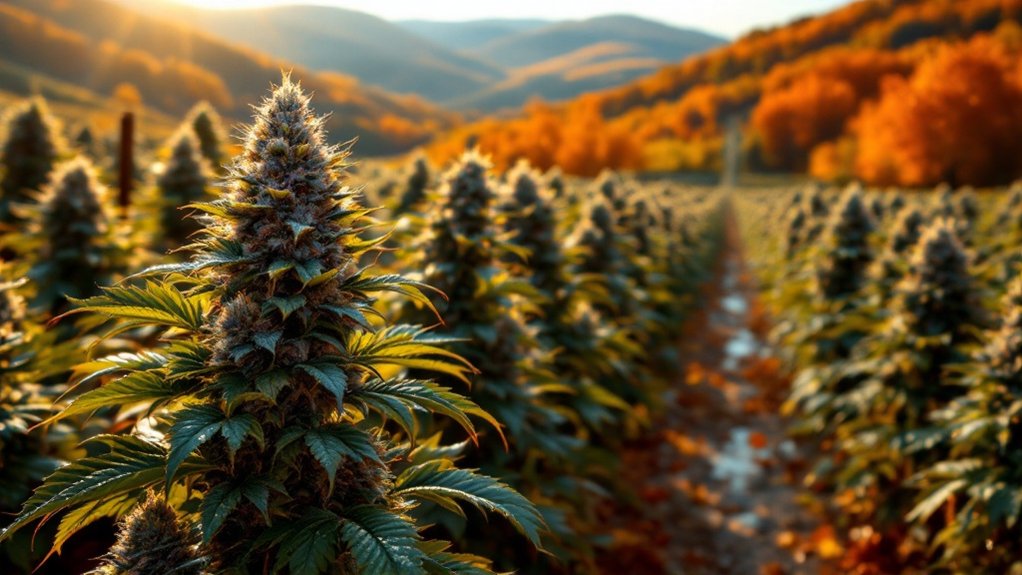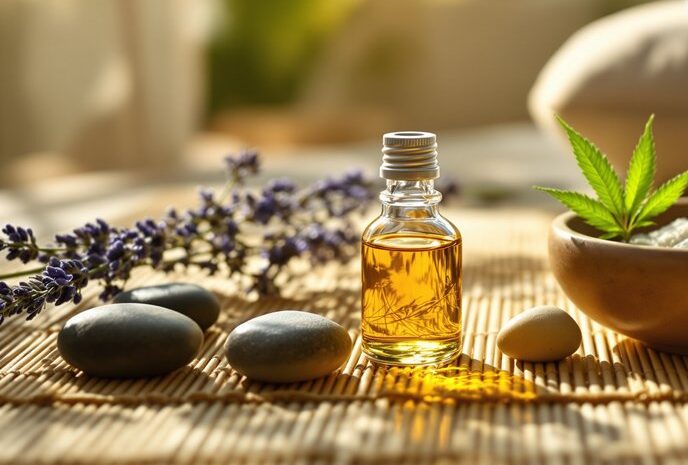Cannabis users are ditching stereotypes and hitting the gym in surprising numbers. Recent surveys reveal that 82% of cannabis consumers exercise regularly, with many crediting marijuana for boosting workout motivation and recovery. The phenomenon spans from yoga studios in Colorado to CrossFit boxes in California, where athletes report enhanced focus and reduced exercise anxiety. While traditional sports science raises performance concerns, this emerging trend challenges long-held assumptions about cannabis and physical activity. The question remains: Is this wellness revolution or wishful thinking?
Breaking the Couch Potato Myth: Cannabis Users and Exercise Motivation
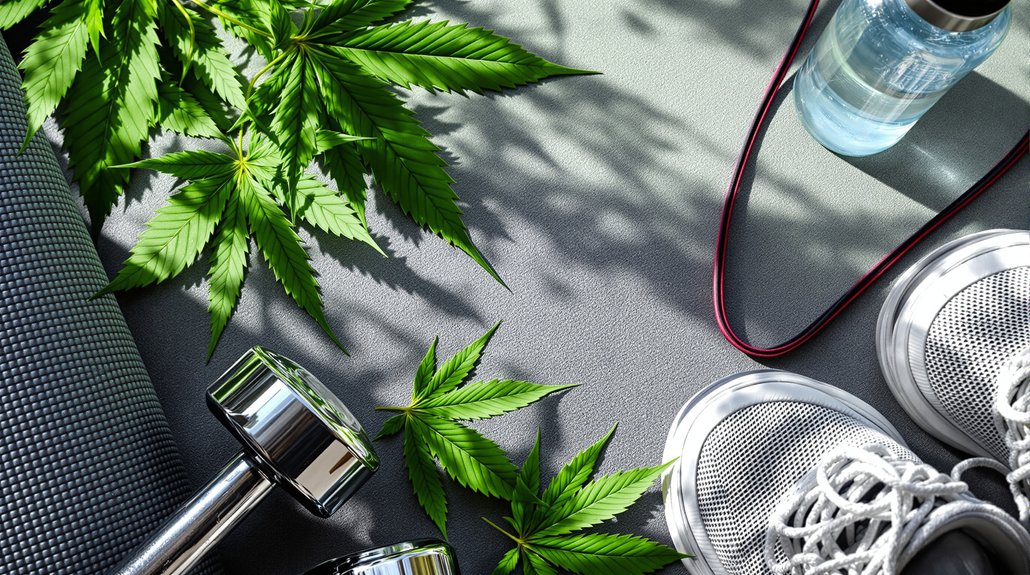
While the stereotypical image of cannabis users lounging on couches dominates popular culture, emerging research tells a dramatically different story about marijuana and physical activity.
A thorough survey of 605 participants revealed that 81.7% of cannabis users actually combine their consumption with exercise, a finding that breaks conventional assumptions about stoner laziness.
The motivation factor proves particularly striking. More than half of these users reported that cannabis increased their drive to work out, while 70% said it enhanced their enjoyment of physical activity. Additionally, nearly 80% experienced enhanced recovery following their workout sessions.
Accelerometer studies back up these self-reports with objective data, showing frequent cannabis users maintain higher activity levels than both non-users and occasional consumers.
National health data confirms this trend, with past-month cannabis users demonstrating 4% greater daily light physical activity compared to abstainers. The trend has coincided with cannabis legalization, as recreational users in legal states show 6.5% higher usage rates than those in non-legal areas.
Natural Pain Relief: Recovery and Performance Benefits
Beyond the motivation boost, cannabis compounds are emerging as powerful tools for managing exercise-related pain and accelerating recovery times.
Research shows THC, CBD, and CBG noticeably reduce chronic pain symptoms, with CBG demonstrating the strongest inhibition of a key protein in peripheral pain signaling.
CBG shows the most potent blocking of Nav1.8 protein, making it superior to THC and CBD for peripheral pain relief.
Terpenes like alpha-humulene and beta-caryophyllene deliver pain relief at morphine levels without psychoactive effects.
These compounds target peripheral nerves rather than central nervous system pathways, enabling athletes to maintain cognitive clarity while managing discomfort. By blocking Nav1.8 activity, cannabinoids may prevent pain signals from reaching the brain entirely.
The result? Faster recovery from exercise-induced injuries and improved adherence to rehabilitation protocols.
Cannabis-based pain management also reduces reliance on NSAIDs and opioids, which carry long-term risks for athletes. When terpenes are combined with opioids, they create enhanced pain relief while potentially reducing addiction risks associated with traditional pain medications.
Enhanced pain control even supports better sleep quality, indirectly boosting muscle repair phases.
The endocannabinoid system plays a crucial role in regulating inflammation, which is particularly beneficial for active individuals seeking faster recovery between training sessions.
The Mind-Body Connection: Enhanced Flow States and Workout Enjoyment
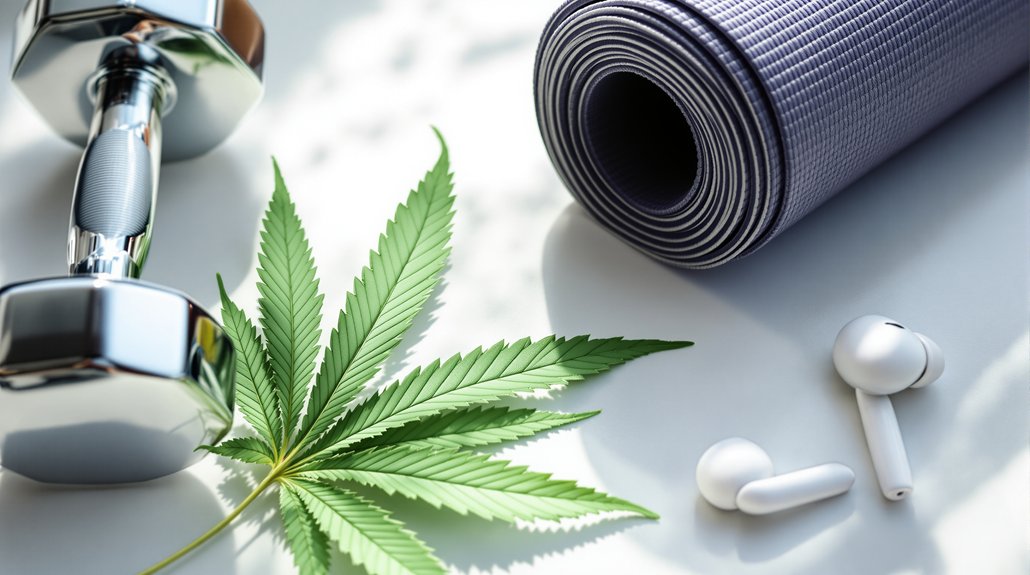
Cannabis transforms not just how the body recovers from exercise, but how the mind experiences movement itself. Research reveals that both THC and CBD markedly boost workout enjoyment and positive mood during physical activity. Users report entering flow states characterized by enhanced mind-body connection and deeper absorption in their routines.
The psychological benefits extend beyond simple pleasure. Cannabis consumption correlates with increased motivation to exercise and higher weekly activity levels compared to non-users. Athletes describe sensations similar to a runner’s high, particularly during yoga, running, and board sports where heightened sensory perception amplifies the experience. These findings directly challenge traditional stereotypes of cannabis users as sedentary individuals.
However, THC can paradoxically increase perceived exertion while simultaneously making workouts more enjoyable. This complex relationship varies greatly by individual, dose, and activity type, with moderate-intensity exercises showing the most consistently positive outcomes. Despite the enhanced enjoyment reported by participants, studies show no significant differences in actual performance metrics during cannabis-influenced exercise sessions.
Performance Reality Check: What the Science Actually Shows
Despite the enthusiasm surrounding cannabis-enhanced workouts, controlled scientific studies paint a markedly different picture of its actual performance effects.
THC consistently impairs athletic performance across multiple measures. Cyclists in controlled trials produced lower power output during 20-minute time trials, while runners clocked 31 seconds per mile slower than their sober baseline. No performance enhancement whatsoever.
THC delivers measurable performance deficits across athletic disciplines, with no compensating benefits detected in controlled research environments.
The cardiovascular impact proves equally problematic. THC spikes heart rate by 14-18 beats per minute during exercise, forcing the body to work harder for diminished results.
Perceived effort remains unchanged, creating a deceptive disconnect, athletes feel they’re performing normally while actual work output plummets.
CBD tells a different story entirely. Studies show CBD-predominant cannabis neither improves nor impairs cycling performance, leaving exercise physiology fundamentally untouched. Some athletes report CBD helps reduce exercise anxiety, potentially aiding in achieving optimal mental states during competition.
The regulatory world has taken notice: WADA bans THC but permits CBD. Elite athletes still face penalties for cannabis use in competitions despite growing acceptance in recreational fitness circles.
It’s worth noting that raw cannabis containing THCA compounds requires decarboxylation through heat to convert into psychoactive THC that could affect performance.
